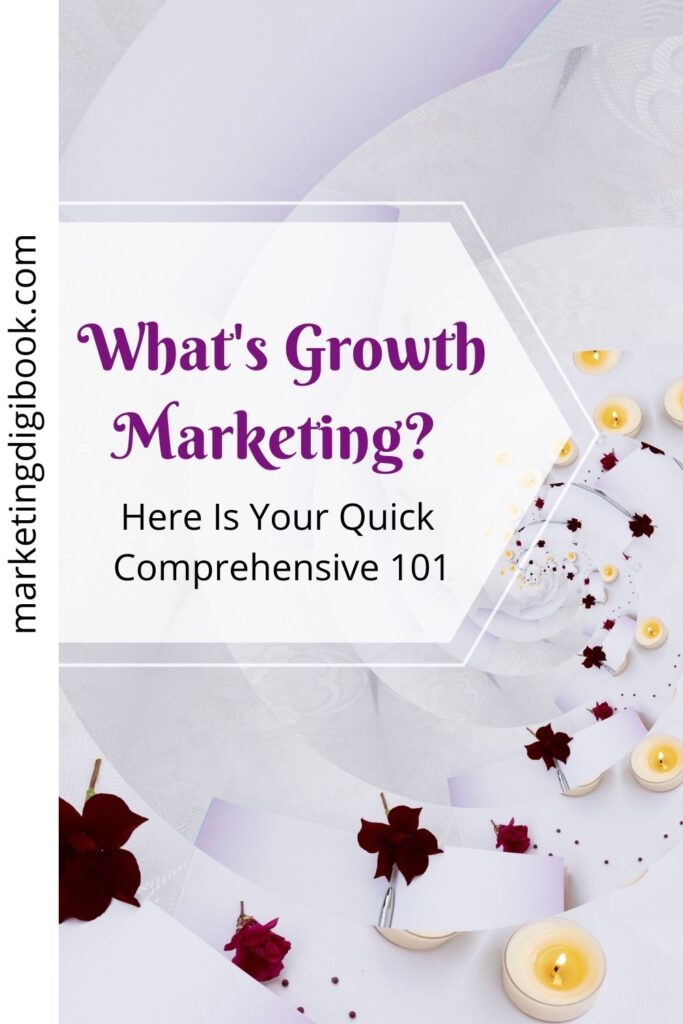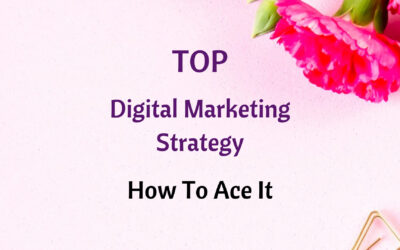Over the past few years, growth marketing has risen particularly with the advent of social media and overall advancement in technology. And although the concept itself is new and the term has become a buzzword in the recent past, the principles behind growth marketing are ancient.
Unlike the old days, technology has allowed access to data and tools that allow marketers to evaluate and make decisions in exceptional ways. Decision-making is more informed than ever before and is mainly data-oriented and geared toward growth.
Growth marketing is about focusing on long-term success by operating across the whole customer life cycle from a potential target audience to becoming a full brand champion.
What Is Growth Marketing?
It is the data-driven and most intelligent part of marketing evolution which is all about incorporating the traditional marketing model with enhanced approaches such as data-driven content, A/B testing, SEO optimization, email marketing, copywriting, viral content, and content marketing, social media, ad-copy, and so forth.
Growth marketing can be defined as a relentless use of experimentation on ways through which to attract, engage and retain customers by focusing on their unique and ever-changing preferences. And using this data to deliver bespoke individualized content that’s relevant to their needs and thereby, optimizing your brand’s consistent growth.
Invest In Your Business
Your Content Strategy Doesn’t Deliver the Expected Results?
Traditional Marketing vs. Growth Marketing
In traditional marketing, brands typically take a simplistic methodology for getting their products or services in front of their target audience. The most typical methods in traditional marketing include print advertising, radio, and TV. These methods mainly focused on converting the potential customer into a buyer as soon as possible, and it ended there.
Growth marketing on the other hand takes a more optimal approach because it’s largely driven by a limited budget. For this reason, marketers have had to find more economical but rather unconventional methods of relevantly reaching their customers by considering each and every step of the marketing funnel.
Growth marketing agencies try to achieve a higher ROI by retaining their customers for longer.
Growth Marketing vs. Growth Hacking
Sean Ellis coined the term “growth hacking” back in 2010 in an effort to describe a marketer whose single job was to scout for opportunities a brand can leverage on. Growth hacker marketing is about exploring underutilized avenues and strategies for gaining at a low cost per acquisition.
Growth marketing on the other hand takes a team-wide approach using innovative methods that are well blended into traditional marketing techniques for a more holistic consistent growth aimed at both short- and long-term gains.
Growth marketing is more of a sustainable method.
Is Growth Marketing Different from Inbound Marketing?
First of all, it’s important to understand that growth marketing and inbound marketing aren’t competing for approaches, in fact, inbound marketing can be very helpful in growth marketing.
Inbound marketing is mostly about the acquisition of new clients or customers while growth marketing goes beyond that and focuses on retaining them in order to get much more from them through more purchases, word of mouth, and so forth.
Why Is Growth Marketing Important?
Unlike other marketing approaches, growth marketing goes beyond customer acquisition and focuses on its lifetime value through continuous and frequent purchases in the future.
An existing consumer has a higher possibility of trying out new products as compared to a new customer. This is not to say that growth marketing doesn’t consider new customer acquisition important. Rather, it sees value in making the most out of already existing consumers.
As a business, you have already established trust and confidence with these consumers and therefore it’s simpler to upsell them to motivate fresh prospects and begin the acquisition journey all over again. This increases profits with lowers costs.
What Are the Core Components of a Growth Marketing Strategy
There are several components used in growth hacker marketing and they are established around customer metrics. These metrics can be effective in brick-and-mortar as well as the e-commerce space:
Customer Life Cycle
A customer life cycle can be defined as the path taken by a customer as they get to learn about your product or service, as they get to interact with it, buy it, and even come back for more. It involves three stages of customer experience that a growth marketing agency can focus on.
These are the activation of the client or customer, their nurture, and their continual reactivation.
Activation stage – This initial stage of growth marketing involves seeking the customer’s attention and piquing their interest. Growth marketers focus on creating awareness, building trust and familiarity through welcoming content and campaigns, trails and onboarding.
Nurture stage – Growth marketing agencies focus on strengthening relationships with newly acquired customers through engagement. It involves cross-channel marketing through promotions, sales, brand updates, and so forth.
Reactivation stage – This stage of the customer life cycle is about re-engaging your customers to retain their loyalty. This is done through campaigns such as post-purchase deals, discounts, etc.
It’s important to understand that all these stages are necessary, and a customer or client progresses from stage to stage at their own pace but it’s the work of the growth marketing agency to proactively meet their changing desires using need-specific solutions.
A/B Testing
Another central component of a powerful growth marketing strategy is A/B testing. This is simply about testing various aspects of your content to ensure it engages your customers or audience in a manner that can lead to conversions. It can be done on emails, social media content, landing pages, blogs, and so forth.
The various aspects that can be tested include graphics, content design, copy, and other such customizations. The variation that leads to the highest performance in terms of conversion can then be used in subsequent campaigns.
With that said, growth marketers know that if B proved to be effective on a certain audience segment, it’s not given that it’s the ultimate best. Another test between B/C might prove that C is in fact a better option.
The key thing is to keep testing because customer preferences are ever-changing and to be able to keep enhancing performance, you need to be as relevant as possible and this is why testing is a regular thing in growth marketing.
Cross-Channel Marketing
This is one of the areas where A/B testing comes in handy. Cross-channel marketing is about knowing the exact channels your customers use the most. The channels they prefer and using these channels to communicate the relevant content to them. Growth marketing uses A/B testing to identify these channels.
Cross-channel growth marketing builds strategic and effective avenues to reach customers through email marketing, in-app messages, SMS, and so forth. Effective cross-channel marketing means that as a marketer you understand how your customers respond on different channels and you can leverage this to make the best of all the customer life-cycle stages.
Cross-channel marketing also involves having a holistic integration of multiple channels that will effectively deliver your content to your customers wherever they are while giving you insights into their behavior on these varying channels.
Conditions Necessary for Growth Marketing to Work
Growth marketing rides on the following three conditions.
A Solid Business Strategy
What is growth marketing without a sense of direction? Well, a business strategy gives your business the direction that it should take. It defines what you are selling, to whom, and where. It will guide the business positioning and offer insights as to where potential growth will come from (new or existing customers).
These decisions are what will guide your growth marketing strategy.
The Agility of Your Working Culture
Within your business’ working culture there must be as little bureaucracy as possible and a less centralized type of decision-making. This is to ensure a quick and easy flow of information and it also encourages ideas from all around the team.
This type of open culture is a winning approach particularly in growth marketing because all the product information, customer stage, and so forth require quick thinking and action.
Access to the Right Data
Growth marketing cannot work without access to metrics. This data is what shows where there are issues affecting your business growth and what channels, content type,s and other such aspects are creating the best response that is bringing the kind of growth required.

Source: Biz Styled Stock
The Most Effective Growth Marketing Channels and Strategies
The right channels and strategies will vary from business to business. However, there are some common basic growth marketing strategies and channels that apply in most businesses no matter their level.
Customer Retention Is as Crucial as Customer Acquisition
Growth marketing is all about growing your business. And one sure way to grow your business is by getting more out of what already exists. Bringing in new customers is great but keeping your already existing customers interested in more of what you have to offer is even greater.
It is therefore enough to say that delivering promised value to your already existing consumers is crucial for their retention as is gaining new customers.
For Lead Generation, Organic Is Greater Than Paid
Organic lead generation means leveraging what’s already trending on SEO. You can use this to offer relevant, useful, and valuable content and product to your customers which can in return drive organic leads back to your business.
Consequently, you will not incur costs via paid advertising. And even when marketers do so; it’s only as a boost to the already strategized content marketing efforts.
Persuasion Is Better Than a Salesy Approach
Today, customers can quickly tell the difference between genuine persuasion and a frank sales speech. And they will always move away from the latter because, unlike in older days, today consumers have absolute control over their purchases.
Persuasion on the other hand is a strategy that involves their desires and needs. And this is why it works. It’s about offering them the information they need, and gaining their trust and eventually, they will walk the buying journey to the end and purchase.
Growth Marketing Is About Data, Not Instinct
Unlike traditional methods of guessing and using instinct, today data is everywhere. And it’s what growth marketing strategists use to enhance the performance of the business in real-time. When used effectively, you can get accurate customer personas and consequently, curate content easier that’s just perfect for them.
The Entire Brand Is More Than Just the Offering
People buy stories and experiences. Sometimes these are what actually form the foundation of business revenue. It’s not just your amazing product or service that brings the revenue home.
Therefore, this growth marketing strategy is about moving past your product into a larger offer of value and worth and satisfaction to your customers. Offer them something creative to positively disrupt their lives. It’s the key factor that will bring them back for more.
Tips on How to Implement Growth Marketing
Growth marketing can be applied through pirate metrics or the acronym AAARRR. What does this mean?
Awareness
This simply is the art of informing prospective buyers about your product or service through various channels such as social media and through SEO content. A growth marketing agency may test out various strategies to establish the one with the most engagement as well as traffic.
It answers the question: how many people did you reach?
Acquisition
After creating awareness, the next step is about generating leads and acquiring new customers. There are several avenues a growth marketer can use to do this for example marketing campaigns, SEO, social media platforms, apps and widgets, and so on.
The question answered here is how many visitors did your page/ blog or website get?
Activation
This step of implementing growth marketing is about getting customers to take the desired action or step after their initial encounter with your business, content, or product. If it’s your landing page, do they visit any additional pages? Do they download the app? Sign up for the email list? etc.
The question to be answered here is how many customers took that step.
Retention Metrics
This step is about monitoring how your activated customers are continuing to show interest in what your business, content, or service is offering. Growth marketers observe this by checking returning consumers over a certain period of time, revisits to your blog or website, opening emails, and so forth.
Growth marketing here ensures customers are delighted and satisfied and they also look out for more opportunities to improve user experiences such as personalized support and any similar moves that would retain them.
The question to be answered here is how many of your customers came back for a “second helping”?
Referral Metrics
If your customers came back for more, they most likely have told a friend about your product. This is what this step is about. Growth marketers have the task of tracking this metric because there isn’t a standard measurable method through which customers can refer your offering to their friends.
However, they can create their own referral programs for ease of tracking and an incentive. For instance, they can use referral competitions, emails with referral offers, and the like.
The question here is how many people have referred your product to their friends?
Revenue
Now this involves all the activities that earn your business income. This growth marketing implementation stage involves identifying all these revenue targets and weighing whether your previous efforts of awareness, acquisition, activation, and retention have led to any profitable growth.
A growth marketing agency here will look out for customer personas with the least or minimum revenue and those that just break even and finally those that exceed the cost of customer acquisition.
Marketers can also experiment with different pricing strategies such as how it’s displayed on the website and so on.
Tracking and Analyzing the AAARRR Pirate Metrics
Implementation of the above stages isn’t the end of the story. Growth marketing will be successful if you identify the type of data to use at the various stages and how to track them. There are several tools you can use to get this information. For instance, Google Analytics is one of them.
At this point as a growth marketer, you have to ask yourself: what is the marketing objective for the growth stage of the product life cycle?
The growth stage of the product life cycle refers to the point at which your sales, revenues as well as profits for your product or offer start to grow as your brand or product becomes more and more popular, accepted, and trusted by your customers. All these aspects work together to push the growth of your business.
How to Determine the Type of Experiment to Run in Growth Marketing?
A growth marketing agency can easily identify areas of testing and how to go about them. However, for rookie marketers, they can simply identify for what areas of the business they want growth in and specifically experiment in those areas. When this has been done then the next area of interest can be tested.
But irrespective of the experiments being carried out, best practices indicate that the sample being tested should be large enough to give conclusive results. This means if you’re for instance testing the number of views of a certain sample, you may have to allow it a long period of time to be able to get a large enough number to get relevant results.
Invest In Your Business
Your Content Strategy Doesn’t Deliver the Expected Results?
Growth Marketing Best Practices
Have Clear Goals and Objectives
Set clear performance goals and objectives in order to actually know what you are doing and where you are headed. Without this clarity, you just might waste time and resources.
Spread Your Risk
If you put all your eggs in one basket, you will be risking too much. In other words, don’t focus too much on one strategy. In growth marketing, you need to diversify your options by assigning smaller portions of the entire cost to various growth marketing strategies.
Know Your Sources of Retention
As seen above, customer retention is a big deal in growth marketing.
As a best practice, you must have data on where your business is retaining in order to extend this particular model that has proven successful to other areas of your growth marketing strategy. Plus, it delivers clues to a general change in your growth marketing strategy in a way that will instantly transform results. And you can repeat it for as long as it will keep bringing positive results.
Gather Data from Current and Potential Users
Thanks to technology today, you can access data from anywhere in real-time. It’s a treasure to exploit because it’s very easy to engage your customers as well as potential customers digitally.
You can leverage social media platforms and email to grab their attention and you can use this data in your growth marketing strategy. Remember data is everything in growth marketing. It can give you important insights that you can use to tweak your content for more relevance.
Stay Up to Date
Growth hacker marketing cannot be effective unless you stay up to date by capturing and understanding the ever-changing trends. Keeping at speed with these trends is like sharpening your tools frequently to make your work easier and more effective.
What might have worked yesterday may not work today. Plus, it is the simplest way to discover new channels for ROI improvement.
Engage Your Creativity
Creativity in growth marketing is a best practice and a good growth marketing agency knows this because every business has its own unique nuances. Therefore, one strategy may not work across all stages of growth or across all businesses.
Thus, your creativity comes in handy as you need to pick the most suitable approach for a certain situation. And the best tactics to delight your different customers in their different life cycle stages. Here, creative thinking and smart thinking must go hand in hand.
Create Stellar Content
The quality of the content you share with your customers or potential customers will give the first impression of what to expect even in your product or service offering. If you want to retain customers’ interest in your business, great and quality content is a prerequisite.
Quality content also gains you loyalty from customers who will view you as a voice of authority. Great content involves the use of quality images, catchy phrases, and so on.
What Does a Growth Marketer Do?
There is a shift in the role of a marketer that has been caused by the changing times. Growth marketers are now becoming more popular and for good reason. These marketers don’t just do regular marketing: they are equipped with a distinct set of skills for their unique work as compared to traditional marketers.
Here are some key competencies and the work they do:
Analytical – Growth marketing is largely scientific. It involves experimenting with numbers and testing hypotheses. A growth marketer must know how to glean and analyze the data they see and use it to optimize or turn that data into actionable steps that be executed.
Solution-centered – This skill involves the ability to target specific areas of your marketing strategy and see the best tactics to improve on them. It involves centering your actions toward solutions and this is the difference between a traditional marketer and a successful growth marketer.
Creative – Growth marketing thrives on creativity. Being smart alone won’t cut it here. Growth itself is all about thinking outside the box. It’s about having unconventional approaches and growth hacker marketing techniques that create successful business transformations. A growth marketer uses their creativity in their everyday decision-making.
Conclusion
Growth marketing and growth hacker marketing are techniques for uplifting your business market share using smart tactics that are outside the traditional marketing range. Marketing growth includes all the pillars of an effective marketing strategy and involves goal setting, formation of a hypothesis, gleaning and analyzing of all relevant data while considering your customer’s entire journey from awareness to retention.
Growth marketing is an eye-opening and sustainable model of constantly growing your business at the lowest cost possible.






